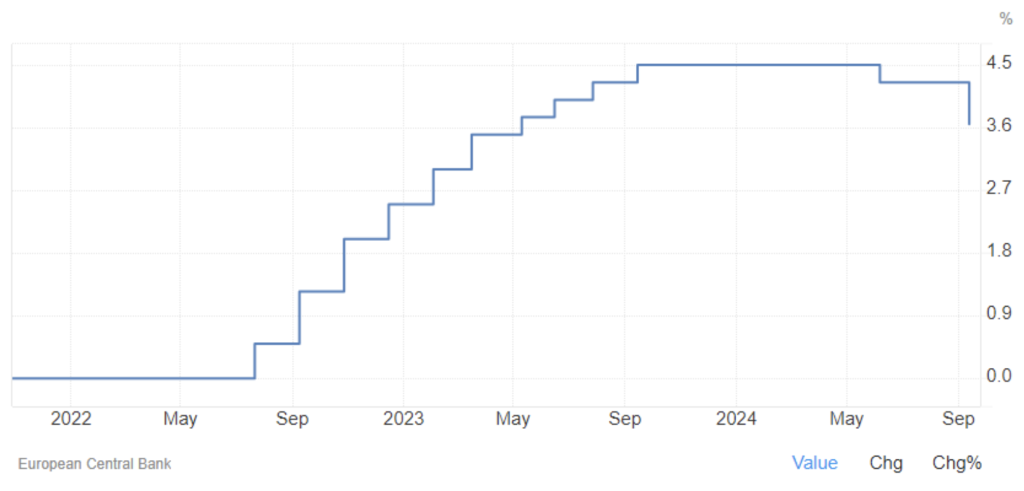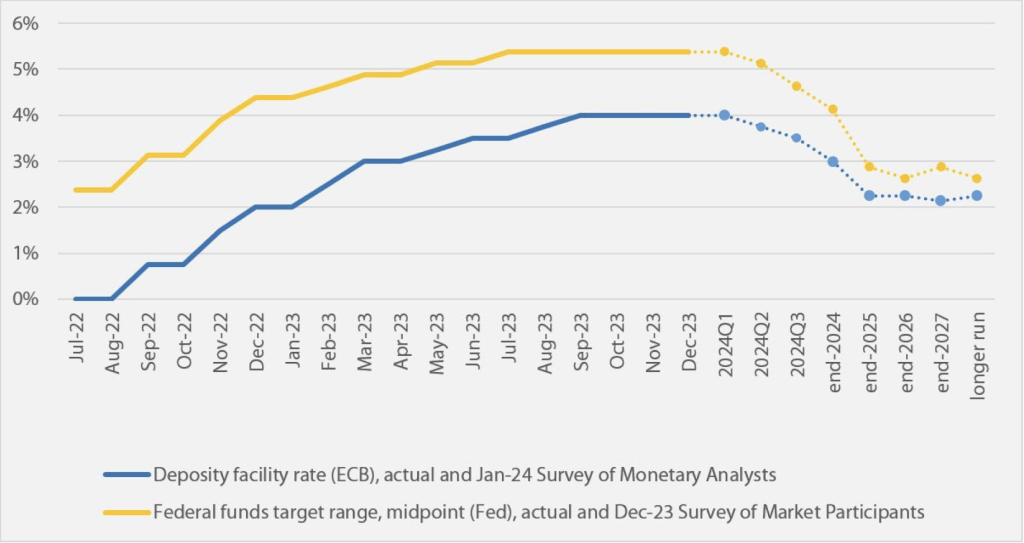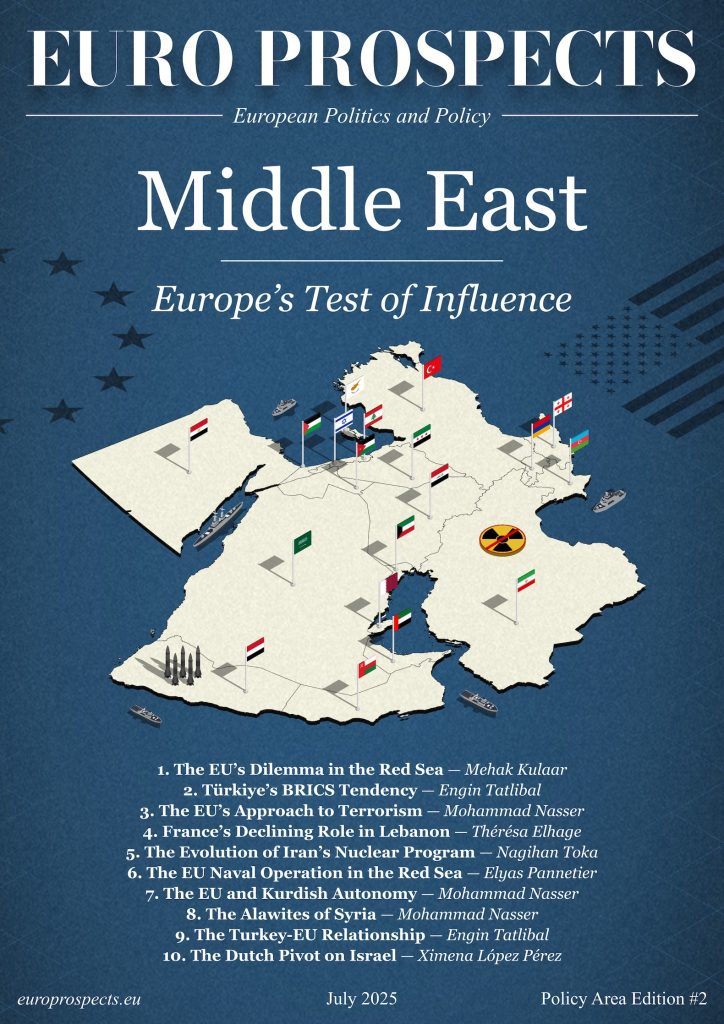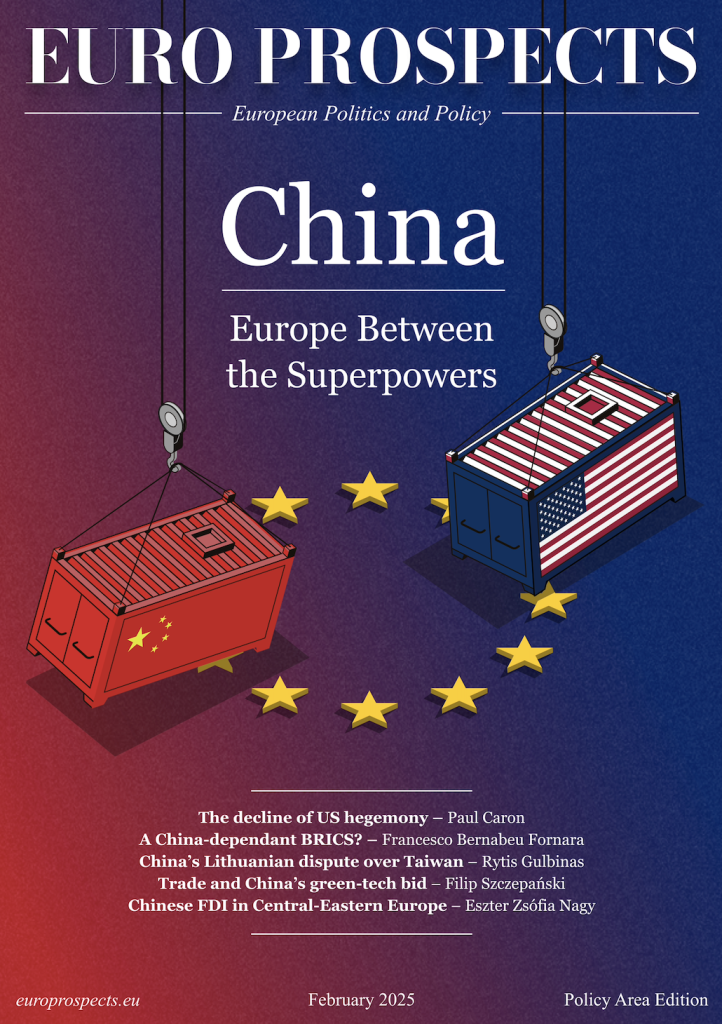15 min read — Analysis | Economy | EU | Policy
Risks and Rewards of an ECB Rate Cut

October 29, 2024 | 9:30
Rates and inflation
Recent news stories seems to indicate the European Central Bank (ECB) is going to cut rates again. After being at 0% since 2016 there have been rate hikes in 2022, leading to a high of 4,5%. In June the rate was cut to 4.25% and in September to 3.65%. The mission of the ECB is price stability, or to be more precise, a persistent level of inflation at 2%. When interest rates are low, borrowers are induced to borrow more, thus increasing the level of the money supply. When interest rates are high, more borrowers are induced to pay off their loans, lowering the money supply, while making them more reluctant to take out new loans.
Whit less money chasing the same amount of goods, the prices are going to increase less, this is the goal that the ECB is after.

It sounds simple enough in theory, however, there are some critical questions to be made regarding this rationale. For starters: is the measure of inflation right? A globalized world economy has kept inflation low by reducing the cost of food and consumer goods. On the other hand, those elements not included in inflation measures: existing housing, education and healthcare, have exploded, leaving people to wonder why they are feeling poorer when all economic indicators are in the green.
Another interesting problem is the fact that there is no economic theory to back up the idea that higher interest rates can reduce inflation. When we look back in history, a central bank intervention in itself has never been able to reduce inflation. Inflation has only been lowered when central bank policy coincided with restrictive fiscal policy: the government taxing more and spending less.
These considerations taken together make it unlikely that we will see the ephemeral “soft landing”, a reduction in inflation without a corresponding recession. That is a challenge for fiscal policy, not for monetary policy, and the task is herculean: raise tax revenue, slash expenditure and do it while keeping the support of the people. But it gets worse.
Married to America?
While the ECB is getting ready to cut, the federal reserve seems to be more cautious. American jobs reports have been better than expected. There are signs of an economy in full swing, lowering rates now would only add more fire to the flames.

As a European parliament report indicates ECB and FED rates have been moving in lockstep, and with good reason. If the US would increase its rates vis-à-vis the Eurozone it would lead to a flow of investment from European into American bonds and thus to a depreciation of the Euro. A depreciated currency is good for exports, but would make imports more expensive, thus exacerbating inflation. Decision makers face a choice between inflation and higher costs of borrowing. And here the big challenge for the EU is that member states have diverging interests. While the US decided as it was founded that the states had to balance their budgets, this decision has not yet been made in the eurozone. For this reason it is very hard to make monetary decisions as any move towards a more restrictive policy immediately threatens the solvency of those member states with bigger deficits.
Predictions
The ECB will continue to follow the federal reserve closely. The war in Ukraine and the subsequent embargoes on Russian natural gas have had a more serious impact on the EU than on the US. This has however not led to more inflation in total, EU buyers of gas have simply spent less money elsewhere, meaning that the fight against inflation is very similar to the battle the US is facing.
Where it has however done a lot of damage is in the EU’s growth prospects. Higher energy costs are a recipe for industrial malaise. Moreover, energy costs are a high percentage of costs for many consumer goods such as food. The cost of living is set to increase further, while the fiscal challenges are still serious.
Fiscal policy is needed to solve these issues, the central bank does not have the policy instruments to do this, and moreover, is constrained by policy on the other side of the Atlantic.
Write and publish your own article on Euro Prospects
Subscribe to our newsletter – stay informed when we publish articles on pressing European affairs.

